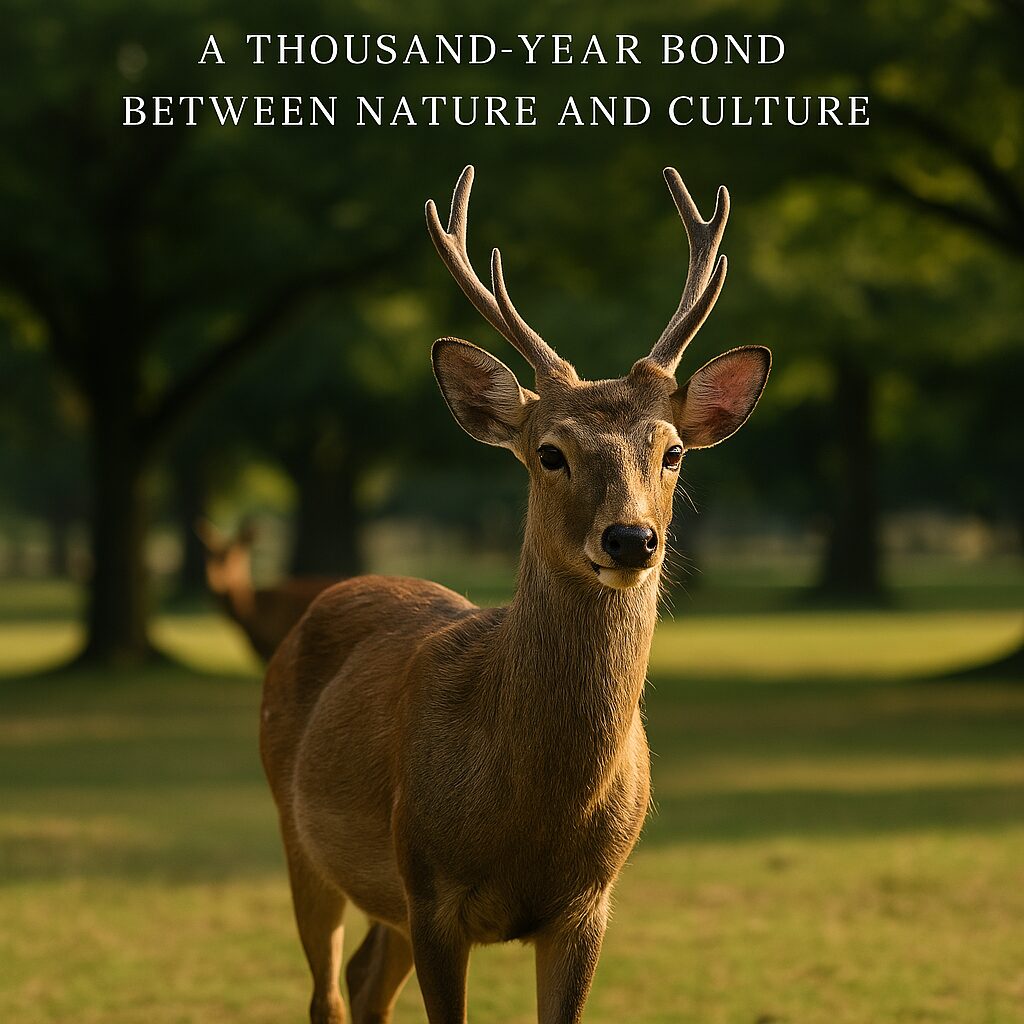Nara Park, nestled in the heart of Japan’s ancient capital, is home to 1,465 free-roaming deer as of 2025. These graceful creatures are not merely tourist attractions—they are living symbols of Japan’s spiritual heritage, ecological resilience, and the delicate balance between humans and wildlife. This article explores their divine origins, biological traits, cultural significance, and the modern challenges they face.
🏛️ Divine Origins: Messengers of the Gods
The reverence for deer in Nara dates back to the 8th century, when Kasuga Taisha Shrine was founded in 768 AD. According to legend, Takemikazuchi-no-Mikoto, one of the shrine’s deities, descended from Kashima Shrine in Ibaraki riding a white deer. This myth established the deer as sacred messengers of the gods, leading to centuries of protection and reverence.
- In the Edo period, harming a deer was punishable by death.
- Deer became spiritual guardians of Nara’s shrines and forests.
- Their presence remains deeply woven into the city’s identity.
🌿 Wild Yet Gentle: Ecology and Daily Life
Despite their close proximity to humans, Nara’s deer are wild animals, specifically a subspecies of the Japanese sika deer (Cervus nippon). They are not domesticated and follow natural rhythms.
- Diet: Grass, leaves, acorns, and occasionally shika senbei (deer crackers).
- Habitat: They roam freely across Nara Park and return to resting areas at dusk.
- Population (2025):
- Total: 1,465 deer
- Males: 315
- Females: 816
- Fawns: 3342
Their signature bowing behavior, learned through centuries of interaction, reflects Japan’s cultural emphasis on respect.
🤝 Coexistence Etiquette: Responsible Interaction
While the deer are accustomed to people, they remain unpredictable. Visitors must follow strict etiquette to ensure safety and preserve harmony.
Key Guidelines:
- Do not touch or chase deer, especially fawns or antlered males.
- Only feed designated deer crackers; other foods can be fatal.
- Avoid teasing or withholding food, which may provoke aggression.
- Show empty palms when crackers are gone to signal you’re finished.
These practices are part of the “Shika Manner” campaign, promoting ethical tourism and reducing accidents.
🏞️ Natural Monument Status: Cultural and Scientific Value
In 1957, Nara’s deer were designated as a Natural Monument of Japan, recognizing their unique role in cultural and ecological history.
- Protected under the Law for the Protection of Cultural Properties.
- Genetic studies show Nara’s deer have a distinct lineage.
- Their adaptation to urban life offers insights for conservation.
They are not just animals—they are living cultural treasures.
⚠️ Modern Challenges: Tourism and Environmental Impact
With rising tourism, Nara’s deer face growing threats:
- Injuries: Over 200 incidents annually involving bites or charges.
- Traffic accidents: 72 cases in 2025, with 36 deer fatalities.
- Pollution: Plastic ingestion has led to fatal cases.
Local authorities respond with antler removal ceremonies, multilingual signage, and public education efforts to protect both deer and visitors.
🎎 Cultural Traditions: Seasonal Events and Rituals
Nara’s deer are central to several cultural events:
- Shika Yose (Deer Gathering): A horn summons deer to Tobihino meadow.
- Antler Cutting Ceremony: Held in October to prevent injuries.
- Fawn Viewing: Newborn deer are introduced to the public in summer.
These traditions blend conservation with celebration, reinforcing the deer’s role in Nara’s heritage.
🌏 A Model for Ethical Tourism
Nara Park’s deer exemplify long-term coexistence between humans and wildlife. Their story invites reflection on how we engage with nature—not as passive observers, but as responsible stewards.
Visitors are encouraged to:
- Learn the deer’s history and significance.
- Follow ethical guidelines during interactions.
- Support local conservation efforts.
By doing so, we honor not only the deer but the values they represent: respect, harmony, and reverence for life.



コメント